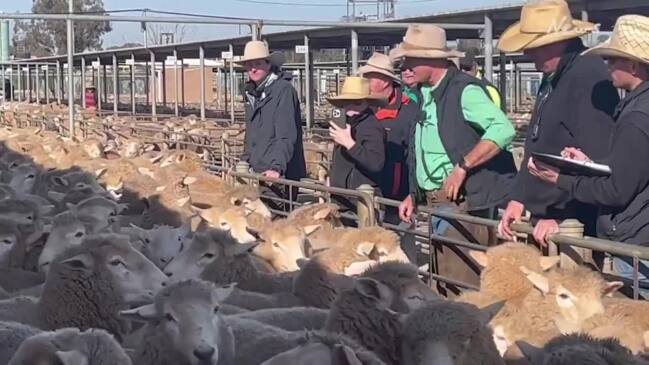Where new season’s lamb prices are heading
For one experienced agent, knowing what to do with new-season lambs in a fickle market is proving a headache.

Spring is lamb’s turn to shine, but this season’s suckers look set for a bumpy ride.
And for agents like Chris Nevins from FP Nevins and Co at Bendigo, advising clients on what to do with their new season’s lambs is proving tricky.
“The market was up this week, which was great to see, and the top pen of suckers at 26-27 kilograms were as good as you would see and made $138,” Mr Nevins said.
“That’s a pretty reasonable price for now, but of course, it is probably $70-$80 less than what they got a year ago.”

Mr Nevins said there were two schools of thought for producers – some were keen to sell and take the money, while others had plans to hold and shear them rather than accept rates paid at the moment.
“Producers can clearly make that choice but should be factoring in the $6 or $7 cost straight away to shear them with zero wool value,” he said.
“They might then keep those lambs for six months and get exactly what they were offered now.”
Mr Nevins said selling over the hooks was also proving a challenge, with some abattoirs reporting they were booked up for both lambs and mutton sheep until October due to the number of producers wanting to deal direct.
“If it was me, I would be selling lambs when they are ready,” he said.
“The prices we are getting now might look pretty good in a month’s time.
“But at the moment, I don’t think anyone knows what will happen.”
About 1800 suckers were offered at Bendigo on Monday, with the National Livestock Reporting Service saying processor demand was keenest for the new season drafts in the offering of about 8800 lambs.

Medium weight trade young lambs made $115-$125 and lighter suckers sold to processors from $65 to $107.
Mr Nevins said prices would undoubtedly fall when the surge of suckers came into the market but again it was difficult to know when this would happen.
“We hear talk about lambs coming from the north and we have seen some but not big numbers yet,” Mr Nevins said.




